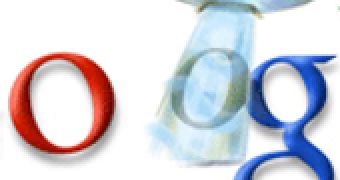Google sure loves its doodles, the graphics it uses to replace the logo on the homepage on special occasions. It ran 12 different doodles since the start of the year, mostly on local versions of the search engine, and you'd think that there couldn't possibly be anything controversial with the cutesy drawings. That is, unless copyright gets in the way as it did in the most recent doodle Google ran in Australia. The doodle was the winner of the Doodle 4 Google competition, but the version that ended up on the site was different than the one that actually won. What was missing was the Aboriginal flag.
This seems like a rather gutsy, and potentially controversial, move from Google which has always made significant efforts to placate everyone and take a very neutral and politically correct stance. So, why mess with this now? It turns out that, and this shouldn't be much of a surprise, while Google loves 'doing the right thing', it loves free stuff even more whether it's giving it away or the one receiving it. Or it may be that Google took a stance against rather silly if not downright ridiculous copyright claims, something it's also been known to do, you take your pick.
The original doodle, submitted by Jessie, an 11-year old student at Rydalmere East Public School, featured some of Australia's unique wildlife, like the kangaroo, koala and emu, but also the rather modern Aboriginal flag. The problem is, the flag's creator Harold Thomas owns the copyright to it and was more than happy to let Google use it on the Australian homepage, for a price.
Think about this for a second, we're talking about a flag here, created, as the author claims, as "a symbol of unity and national identity for Aboriginal people." As Techdirt rightfully asks "who copyrights a flag?" and "do we need more incentives to create new flags?" After all, that's the intended purpose of any copyright law, or at least part of it, to foster innovation, competition and fair trade.
In any case, when Google contacted the author to get his permission to use the flag in the doodle, he says he was offended by the lack of respect the company showed, as it assumed that it would be able to use it for free. This was definitely not the case as, even though he allows health, education, legal and other organizations that help Aboriginal people use the flag for free, he charges for any commercial use.
With the negotiations off to bad start, Google figured it would be better off removing the flag from the doodle which it did. Obviously, this was a great benefit to the Aboriginal people and its culture as it spared it the disrespect of having its flag displayed on the largest search engine in the world and in Australia, a country otherwise known for its progressive attitude towards internet freedoms. Another great victory for copyright holders everywhere. [via Sydney Morning Herald]

 14 DAY TRIAL //
14 DAY TRIAL // 
